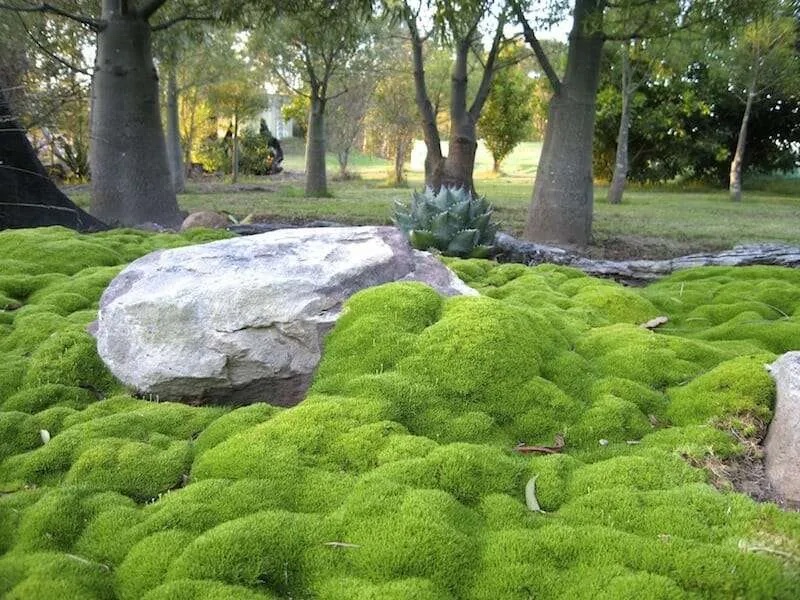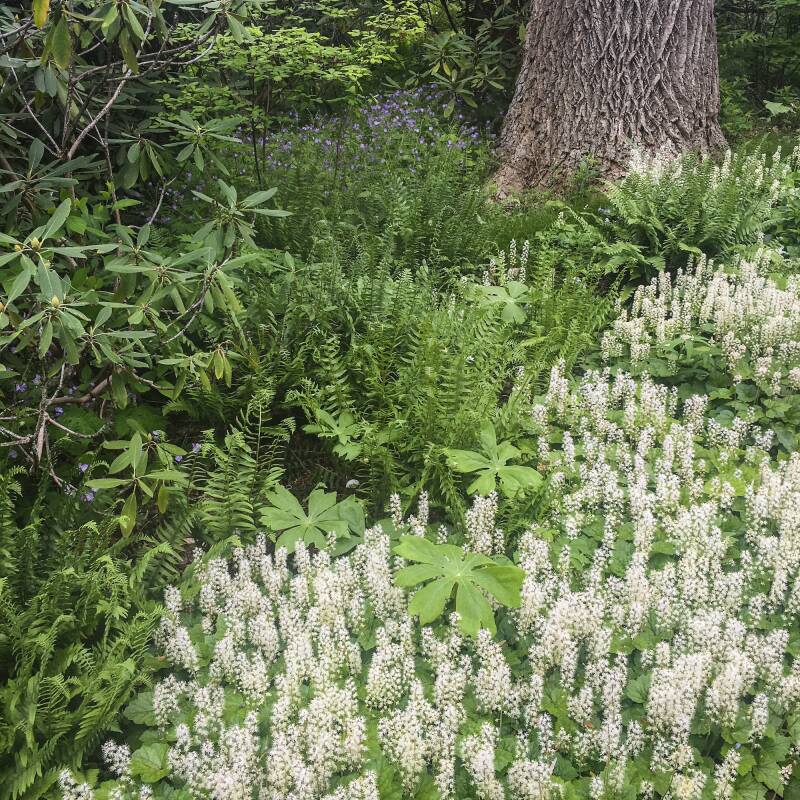“Basil is tricky,” people said in an effort to console me after my basil collapsed. They tried to explain away my plight: “You’re probably overwatering.” “Basil needs a lot of water.” “Is it wilting in the hot sun?” and “Basil needs a lot of sun.” Or, “I’m sure it’s aphids.”
Why did I choose to plant tricky basil in the first place? Because it smells amazing. Following my Lavender Debacle, I wanted to add groundcover plants to my San Francisco window box to beautify it and to keep down weeds. The list included oregano, alyssum, and succulents. And as the first waft of basil in the garden aisle reached me, I reasoned that if oregano is groundcover, basil must be as well.
My basil was beautiful for the first three days. But within a week one plug collapsed, then another the next week. The rest hung on, but looked so delicate that I daren’t pluck a leaf lest I kill the entire plant. Plus, the leaves were peppered with holes. I wasn’t sure what was causing the destruction–or if my basil was still safe to eat.
Disaster loomed. I was expecting house guests, Italian house guests. Would I have enough basil to make pesto for the table, let alone any basil leaves to offer them at all? In my pesto memories of yore, my mother carried basil into our kitchen by the armful, gathered from a friend’s bountiful fields. I knew that would not be happening, but still hoped for a little batch.
Panicked, I turned for help to expert Berkeley-based garden designers Stefani Bittner and Leslie Bennett of Star Apple Edible Gardens. It turned out that Bittner is a master on basil (thank God).
“So, when it comes to basil, what matters most?” I asked.
The answer: it all matters–plant source, soil, water, heat, sun. Unexpectedly, this was music to my ears. If there are lots of variables to tinker with, that means hope for the novice gardener.
In no time at all, she had me dreaming about my someday lush and overflowing basil cutting garden. In it, I will have several varieties chosen for looks–Purple Ruffled and African Blue among them. Several more for pesto–Pesto Perpetuo, Classic Genovese, Italian Large Leaf–and others for non-Italian culinary pursuits, such as Cinnamon or Lemon Basil.
But in the basil garden of my reality, I have only the usual suspect–Sweet Basil–so Sweet Basil I needed to learn how to grow. Here are Stefani Bittner’s top tips:
Photographs by Meredith Swinehart.

Above: First things first: Sweet Basil and Basil Genovese are the same thing; they’re the dominant variety you’ll find in any store and the default basil for pesto. But.
“The worst thing you can do is buy the basil plants sold at the grocery store,” Bittner warned me. “Do not do it.”
Grocery store basil is bushy and lush, oddly available even in late winter at Trader Joe’s and other major grocery stores, and has likely spent its entire life in a hothouse. It is not prepared for life outdoors.

Above: I confessed that I’d purchased my basil from the hardware store down the street, and read aloud the name of the source nursery on the plant marker. Luckily, Bittner approved and said it’s OK to purchase seasonal basil starts if they’ve come from local nurseries. Regardless of where you actually purchase it, your basil should be sourced from a nursery; it will have been grown in an actual garden and is ready for life outside.

Above: I’d killed every basil plant I had ever tried to grow, but admittedly I had always attempted the feat indoors.
Bittner said that it’s possible to successfully grow basil inside–”Everyone manages to grow something with the right system”–but she doesn’t recommend it. Plants need the variation in temperature that the night/day cycle naturally provides, and indoor plants usually do not get enough sun.

Above: Bittner recommended that I overplant, knowing that I’ll lose some plants in my tricky growing environment. I appreciated the reassurance that some degree of failure is normal. She also reminded me that basil is an annual, so it will eventually die. As soon as it gets cool, the basil will turn brown and yellow, wilt, and die. (Here in Northern California, that is usually about the first week of November.)

Above: Next, I inquired about planting tips. “Are you not tickling the roots?” Bittner asked. She explained that the plant is constrained in its pot at the nursery but now has a lot more room to grow. Tickle the roots to encourage them to start spreading.

Above: My first collapsed basil plant, which I’d planted under the shade of a little olive. Though climate conditions will vary for every reader, Bittner explained an overarching idea about dry, inland heat versus a cooler waterside climate. It was a pleasant 72 degrees in San Francisco when we were chatting by phone, and a scorching 98 degrees less than an hour away where Bittner lives in Lafayette. In San Francisco’s cooler climate, I should put my basil in full sun. For inland conditions, basil should go in partial shade.

Above: “Watering is one of the most difficult things for a home gardener to understand,” Bittner said.
Forget frequency of watering and the size of your watering can. Instead, put your finger about an inch into the soil; do not judge watering needs by how the top layer looks. You want the soil to be cool, damp, and “sprung out like a sponge.” Not dry, and not soupy. Look at your basil: If it wilts, it needs water. If it yellows and your soil is wet, you’re overwatering.

Above: What’s eating my basil? Because most of the evidence was tiny circles, Bittner surmised that the perpetrator was a slug or caterpillar who likely rode a newly purchased plant into my window box. She told me to look through the box when the soil is moist–likely first thing in the morning–and find the slug and pluck it off. (N.B. I still haven’t found the offender, and holes are still appearing. But also I don’t wake up very early.)
Since several people had guessed that aphids were eating my plants, I asked her about this seemingly common problem. “It’s a common problem for a stressed out plant,” Bittner said. Plants usually fight off aphids on their own if they’re healthy. If you have aphids, rinse them off with water, refresh the soil, and water your basil well.
Above: So slugs like to eat basil, but what does basil like to eat?
Bittner said that most people plant in poor soil, and potting soil has the least amount of nutrients of any soil you can buy. She suggested planting basil in a 50/50 mix of potting soil and organic compost. At Star Apple Gardens, she likes Point Reyes Compost Company. I used Bu’s Blend Biodynamic Compost ($18.99 from Malibu Compost) because it was stocked at my local garden store.
Because I had already planted half of my basil, Bittner told me to put a layer of organic compost on top of the soil and to water well. She noted that everyone (basil growers or not) should be refreshing the soil at least twice a year. For the new plugs I was about to plant, she suggested I dig the holes first and then churn in the compost with the soil in the root space. Mixing is critical; if you plant only in compost, the plant will prefer the compost and fail to spread its roots.

Above: All the plants in my planter box appreciated the compost, as well as my new understanding of watering; my planter box has never looked better. As for the basil, the group in full sun is thriving. The pair in a shadier spot are surviving but not growing, and the pair I replanted in the shade of the little olive are dead. In two attempts, I’ve learned where the basil will thrive and where it’s just not meant to be.
I asked Bittner for some closing tips on harvesting. She said to avoid cutting the main basil stem; instead, pinch off the leaf grouping that branches away. And think back to botany class; you must leave enough leaf space for photosynthesis to occur if the plant is to survive. She usually recommends leaving at least three leaves, but in my case, five.
After harvesting, treat basil like a cut flower; leave it in a glass of water in a cool spot in your kitchen and use it as you need it. “Never store basil in the refrigerator. You know that, right?” she asked.
I’ve since pinched off leaf groupings for Caprese salad, brie-and-baguette sandwiches, and yes, for pasta for the Italiani, and more has grown in its stead. As for pesto? Stefanie said that if that had been my intention, I would have grown a lot more basil in the first place. But, miraculously, the answer is yes; I have enough basil to make a small batch of pesto.
Feeling a sudden desire to grow your own basil? A Classic Basil Collection of six plants is $28.95 from Williams-Sonoma.
For more of Meredith’s Novice Gardener adventures, see How Did I Kill My Lavender?
Finally, get more ideas on how to successfully plant, grow, and care for sweet basil with our Sweet Basil: A Field Guide.
Interested in other edible plants for your garden? Get more ideas on how to plant, grow, and care for various edible plants (including flowers, herbs and vegetables) with our Edible Plants: A Field Guide.















Have a Question or Comment About This Post?
Join the conversation (17)